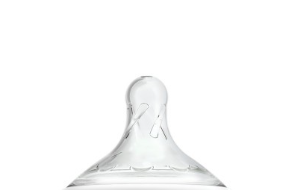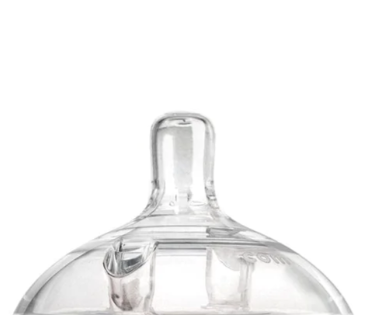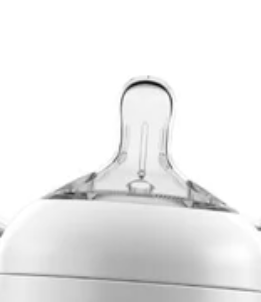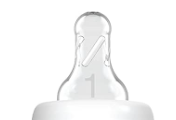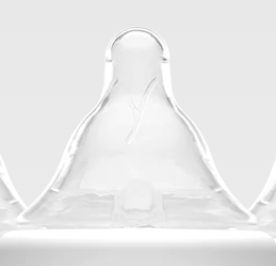What to look for in bottles -- it's not what you think!
First thing to know is that bottles and pacifiers and most baby things are not regulated by anyone, so companies can market their products however they like. The FDA does regulate materials used, but there is not a regulatory body for nipple shapes, flow, bottle sizes, etc.
Many times new parents see marketing ploys for “breast like” and “anti-colic” and think they are getting the best option for their baby, but many times these bottles are actually encouraging oral-motor dysfunction and compensatory strategies. The best way I can describe it is that “breast like” nipples don’t necessarily act like the breast when baby is feeding.
What we want is a slow flow (or flow most similar to breastfeeding parent), a slow slope of the nipple, a deep latch, and a wide gape for baby where they can flange their lips out to get the best seal on the nipple. These things are hard to achieve with nipples that look like this (THESE ARE WHAT WE DON’T WANT):
All of these nipples promote a shallow latch, pursed lips, and typically rely on gravity assisting the feed due to the placement of the valves and shape of the bottle, making it easy for baby to munch and compress the nipple and get a lot of milk at once.
What we want is for baby to open wide, get a deep latch, and use their tongue to suck milk from the nipple when they want it and pause when they need a break, but keep the suction on the nipple – no gulping, clicking, or slurping please. This requires full tongue mobility, good muscle tone and strength, and proper lip flange to create a seal that doesn’t allow milk to leak out and air to sneak in.
These nipples are more of what we want:
The pyramidal shape of nipples like the Pigeon/Lansinoh, the Gulicola (Left - all 3 of these have similar shape, but vary in flow rates), and the Evenflo Balance (Right), as well as the Narrow Dr. Brown’s (Middle) are all great options for baby’s to promote a deep latch, more tongue movement, and improved oral motor progression. These nipples are also all supportive of the bodyfeeding relationship as they require suction to transfer rather than being compression dominant like some of the nipples listed previously. As far as flow rates, we want to try to make sure breast and bottle feeds are equally challenging for baby, in a sustainable way that ensures baby is getting proper calories of course. With that said, using one of the compression based bottles to make sure your baby is fed and growing is not a bad thing, but does indicate there’s a level of oral dysfunction that I would want to learn more about and figure out why they’re unable to use the more preferred bottles, especially if this is also impacting breastfeeding. I see the compression based bottles as a bandaid fix that can be very helpful for some circumstances, but not a long term feeding plan. If feeding from breast or bottle seems challenging, please reach out to your local lactation consultant for help! They are the first line of defense when it comes to feeding challenges, and then go to an OT/PT/SLP with training in this area if you continue to have concerns or it’s recommended by your LC.
Was this what you expected to learn about bottles?

